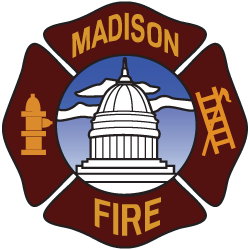Carbon Monoxide FAQs
Does your home have a Carbon Monoxide Detector? It could save your life!
What is Carbon Monoxide (CO)?
Carbon monoxide is a colorless, odorless, poisonous gas that is produced by the incomplete burning of solid, liquid, and gaseous fuels. Appliances fueled with gas, oil, kerosene, or wood -- such as stoves, water heaters, and furnaces -- may produce CO.
Each year, hundreds of people die, and thousands are treated in hospitals, due to carbon monoxide poisoning.
What are common CO sources in your home?
Fuel burning appliances such as:
- Furnaces
- Stoves & Ovens
- Water Heaters
- Dryers
- Room/Space Heaters
- Fireplaces and Wood Stoves
- Charcoal Grills
- Automobiles
How to prevent CO poisoning?
- Make sure appliances are installed and working according to manufacturer's instructions and local building codes. Have the heating system (including chimneys and vents) inspected and serviced annually by a professional, which includes inspecting for blockages, corrosion, partial and complete disconnections, and loose connections.
- Install CO detectors
- Never use gas appliances such as ranges, dryers, or ovens for heating your home.
- Never burn charcoal inside a home, garage, vehicle, or tent.
- Never operate un-vented fuel-burning appliances in any room with closed doors or windows or in any room where people are sleeping.
- Never use portable fuel-burning camping equipment inside a home, garage, vehicle, or tent.
- Never leave a car running in an attached garage, even with the garage door open.
What CO level is dangerous to your health and what are the symptoms of CO poisoning?
The health effects of CO poisoning depend on the level of CO and length of exposure, as well as each individual’s health condition. The concentration of CO is measured in parts per million (ppm).
According to the Consumer Product Safety Commission (CPSC), health effects from exposures to CO levels of approximately 1 to 70 ppm are uncertain, but most people will not experience any symptoms, although some heart patients may experience an increase in chest pain.
As CO levels increase and remain above 70 ppm, symptoms may become more noticeable (see below). As CO levels increase above 150-200 ppm, disorientation, unconsciousness, and death are possible.
Symptoms of CO poisoning include:
- Headache
- Nausea
- Fatigue
- Dizziness
- Shortness of breath
- Sleepiness
- Confusion
In many cases of CO poisoning, these symptoms have been mistaken as the flu.
What type of CO detector should you buy?
CO detectors either operate on battery power or directly off your household current, and they use different sensor technologies to sense the levels of CO in your home. Regardless of the different types of CO detectors, all detectors sold on the market today should conform to minimum sensitivity and alarm characteristics defined and verified by the Underwriters Laboratory (UL). So the primary guide to selecting a CO detector is to make sure that it is UL listed. Outside of this, select a CO detector that meets your application requirements and make sure to follow the installation and maintenance instructions (e.g. battery replacement schedule) provided by the manufacturer.
How many and where should you install CO detectors?
It is recommended that a CO detector be placed on each level of your home. At a minimum, you should have a CO detector located outside and near sleeping areas.
After covering the sleeping areas, the next best location for an additional CO detector is in the area of any major gas burning appliances such as a furnace or water heater. In general, follow the manufacturers’ instructions for installation location.
Although CO is about the same weight as air, it is often recommended to place CO detectors high since the CO may be contained in the warm air coming from the combustion appliance. Also, when installing CO detectors in the areas of major gas burning appliances, do not install the detector within approximately 15 feet of the appliance itself. Again, follow the manufacturer's instructions.
What should you do if the CO detector alarm sounds?
First of all, never ignore an alarm and do not panic! Although exposure to high levels of CO over prolonged periods of time can be life-threatening, a large number of instances that activate the CO alarm are not life-threatening and do not require calling 911. To determine the need to call 911, ask the following question to everyone in the household.
"Are you feeling sick and/or experiencing the "flu-like" symptoms of dizziness, nausea, or headaches?"
If Yes: Immediately evacuate the household to a safe location and call 911. The best initial treatment for CO exposure is fresh air followed by treatment from a physician.
If No: The likelihood of a serious exposure is greatly reduced and calling 911 is not necessary at this time. Instead, turn off any gas appliances or equipment and open doors and windows to help ventilate your home with fresh air from outside. After completing this, occupants are urged to contact your local gas utility company (e.g. MGE at (608) 252-1111) or a qualified heating and ventilating service contractor to inspect your system for possible problems. NOTE: If at any time during this process someone in your household experiences "flu-like" symptoms, immediately evacuate the home and call 911.
